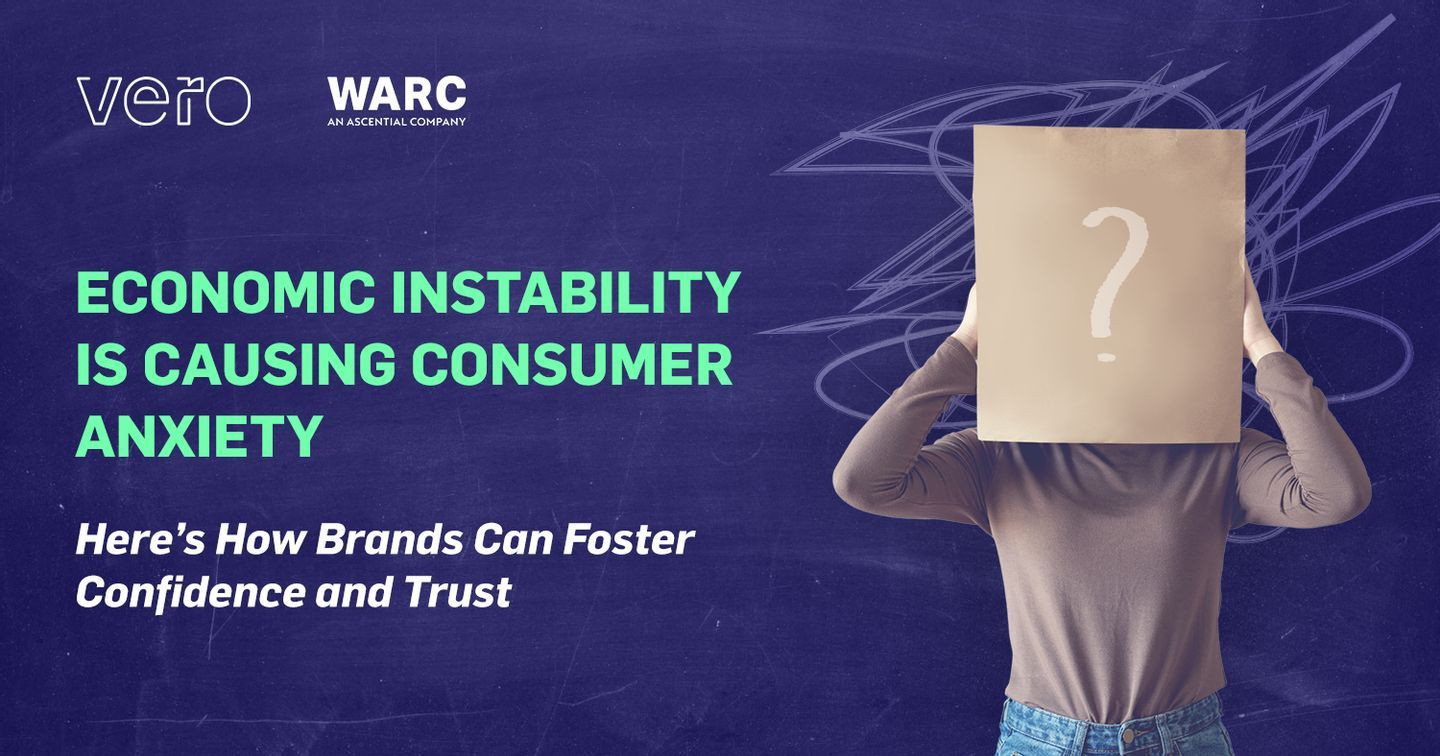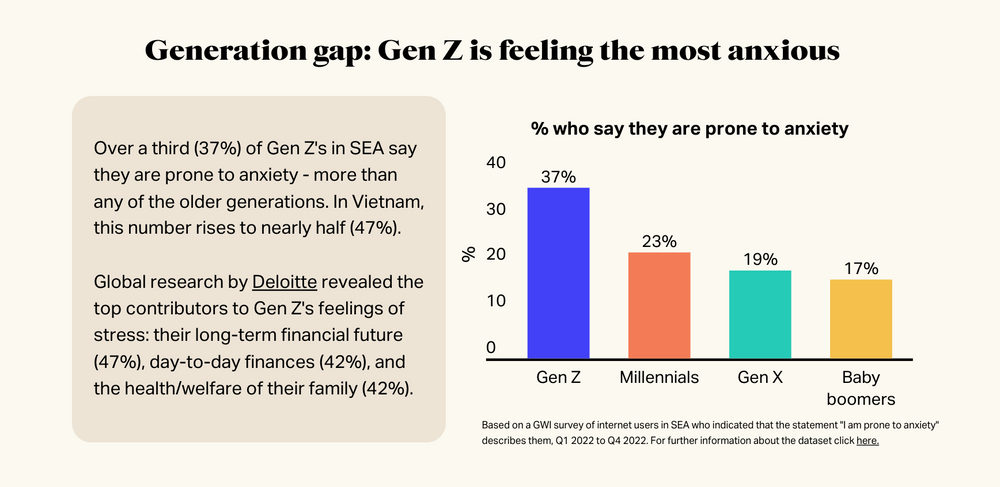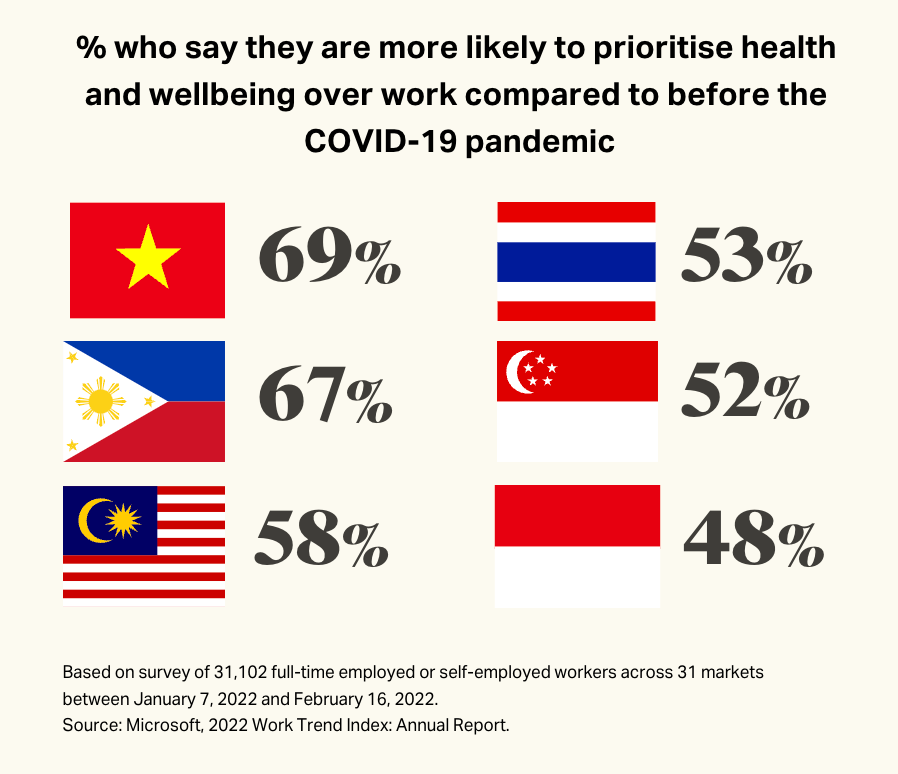This article is also available in Vietnamese
By Hong Phuc Ngo, Strategy Director at Vero and Rica Facundo, APAC Editor at WARC
With the world still reeling from the impacts of the COVID-19 pandemic, food shortages, geopolitical challenges, and financial fragilities, the path toward global stability remains ambiguous. In Southeast Asia, while the economic outlook seems optimistic, threats to sustainable prosperity loom.
This prolonged instability, referred to by economists as a “state of permacrisis,” directly affects consumers, who are the backbone of the economic system. As food and energy prices surge to near-historic highs and supply chain shortages continue, consumers are becoming more anxious than ever to navigate the financial challenges and make informed decisions about their spending and lifestyle choices.
In a recent WARC Spotlight Southeast Asia series, our GWI research found that Asians are shifting their worries away from the pandemic to inflation-related concerns. According to a separate survey by Milieu, almost four in five of those surveyed in Singapore and the Philippines find life stressful, followed by Malaysia (61%), Thailand (59%), Indonesia (51%) and Vietnam (42%). Vietnamese consumers, specifically, named unemployment and economic recession among their top concerns.
Notably, Gen Zs in the region are the hardest hit by mental health issues, with over a third (37%) of them saying they are prone to anxiety. In Vietnam, this number rises to nearly half (47%). Young as they may be, they worry about the type of future they’re heading toward. Global research by Deloitte revealed the top contributors to Gen Z's feelings of stress: their long-term financial future (47%), day-to-day finances (42%), and the health/welfare of their family (42%).
But while the stress and anxieties are evident, the GWI study found that mental health issues remain a taboo topic for most of Southeast Asia, with only 30% feeling comfortable talking about their anxieties openly. This number dropped to 24% among people living in rural areas, compared to 34% of those in urban contexts, potentially reflecting the different levels of awareness and acceptance in these communities.
However, there is an increasing recognition and prioritization of mental health and wellbeing, especially among the Vietnamese (69%), Filipinos (67%), and Malaysians (58%).
When consumer loyalty is tested, show them genuine value
These fears and anxieties put customer loyalty to the test. When spending power is limited, consumers become more discerning about their purchases, and seek brands that offer genuine value, demonstrate empathy and agility, and take a human-centered approach over mere PR stunts.
Understanding the ‘why’ behind their behaviors and decisions allows brands to connect on a deeper level with already-anxious consumers and reinforce their relevance through a new form of cultural value and win loyalty and trust.
Here are two ways for brands to win over and retain customers in this new cultural climate, helping to reduce a customer’s price sensitivity.
- Take a ‘life-centric’ approach: One of WARC’s Spotlight experts explores how brands can go beyond consumers’ immediate needs to consider how systematic challenges interplay in a consumer’s everyday lives, thereby increasing customer loyalty and lifetime value and expanding the brand’s relevance across multiple facets of a customer’s life.
- From ‘cost conscious’ to ‘quality confident’: Do not refer to your customers as “cost-conscious” because it only reinforces the feeling of anxiety and scarcity. How can you make customers feel like they are making smarter choices and reducing mental availability? Provide flexibility to communicate the multi-functionality of the product.
This is probably the reason why gaming is increasingly becoming popular as an outlet to alleviate stress and anxiety. More than 50% of PC and console players in the region said they started playing games to satisfy their “need to relax,” a Google PC & Console Insights Report in 2022 showed.
Remember, customers want to ‘buy into’ not just ‘buy from’ the brand
Branding creates emotional connections and influences perceived value. Brands are much more than logos or taglines; they are stories, values, and emotions – and these are what customers are drawn to. This becomes especially crucial during an economic downturn when consumers might need to make tough decisions about allocating their spending.
A strong brand can enhance the perceived value of a product or service. This can allow companies to maintain pricing and protect margins during an economic downturn. Luxury brands like Louis Vuitton or Gucci can still command high prices for their products even during recessions due to the perceived prestige and status associated with owning these brands.
A local example can be seen in the Mercedes Benz Vietnam (MBV) approach. Recognizing the importance of both emotional connection and perceived value, MBV identified its next best customers for the C-class line. MBV notably shifted its campaign for the Mercedes C200 from the traditional “show-off” businesspeople in Vietnam to the younger aspirational generation of affluent consumers.
The entire “This is my world” campaign served as a statement of ownership and self-expression, providing a new perspective on the role of the product for the customers. It was not just about owning a luxury car but about making a statement about their world and their place in it.
Decode consumer conversations for authentic engagement
In today’s digital landscape, the complex tapestry of consumer desires, preferences, and critiques has found its way to social media. Enter social listening: the art of tuning into these platforms to decode sentiments surrounding brands and trends. This tool empowers brands not only to monitor and dissect conversations but also to actively participate and resonate within these dynamic dialogues.
As the digital chatter reflects evolving consumer perspectives, it’s crucial to note that a significant portion of this discourse is driven by Gen Z, a demographic with distinct needs and an amplified demand for brand accountability. For instance, consider the phenomenon of “cancel culture,” wherein they collectively disassociate from individuals or brands linked to socially or morally unacceptable actions. Here, social listening emerges as an invaluable asset, offering a clearer understanding of this trend.
Brands can further connect with these young consumers by immersing themselves in the consumer’s world to understand their lifestyle, motivations, and pain points. This could involve everything from ethnographic research, where observers are placed in people's natural environments, to participating in online communities or forums where your consumers are active.
To illustrate, the prevailing phenomenon of positive “flexing” among Vietnamese Gen Zs holds significant insight. The phrase “Flex đến hơi thở cuối cùng,” roughly translating to “Flex until your last breath,” has gained traction within the Vietnamese social media sphere. It characterizes the act of showcasing achievements, possessions, or lifestyle, often persevering even through challenges or to the point of exhaustion.
Engaging with this cultural shift, brands can actively participate in relevant Facebook groups, gaining first hand exposure to the shared accomplishments, linguistic nuances, and community dynamics. The trend also signals a demand for products and experiences that not only embody excellence but also possess a certain degree of prestige or ‘flex’ value. Brands can align with this movement by offering offerings that resonate, encouraging consumers to proudly share their experiences on social media platforms.
In the crucible of uncertainty, brands that make an earnest effort to comprehend consumers’ shifting needs and emotions foster a bond of trust and loyalty that transcends challenging times. Consumers are far more than mere data points or demographic segments; they possess the power to either uplift or undermine a brand’s reputation. Getting on their good side means survival.


























